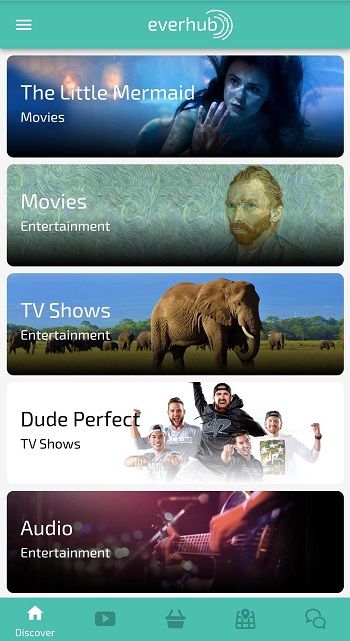Category: Uncategorized
2021: Inflight Dublin Year in Review
As we say goodbye to 2021 and begin a new year, we are taking a look back at Inflight Dublin’s exciting developments over the past 12 months. From new partnerships, awards, and new clients for wireless and content services, 2022 is shaping up to be even better.
March
Gladi8tor Gaming Partnership
Inflight Dublin announced its exciting new partnership with innovative inflight games provider, Gladi8tor Gaming, enabling clients to enhance the passenger experience while also generating revenue through game sales and advertising.

April
Korean Air Wireless IFE
The flag carrier of South Korea, Korean Air, chose Inflight Dublin to provide a 6-month trial of its wireless Inflight Entertainment (IFE) solution, Everhub™.
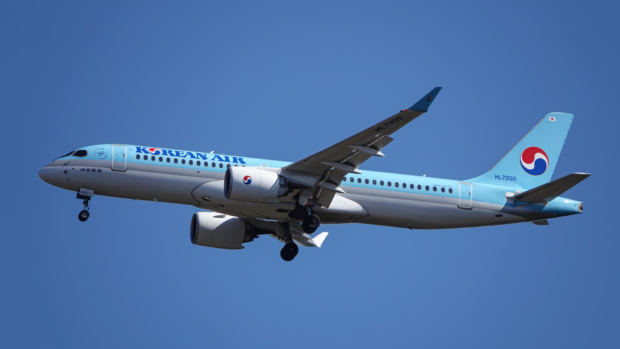
Wideroe Wireless IFE
Inflight Dublin was selected by Widerøe to equip their Embraer E2 aircraft with the DO-160G certified Everhub™ Portable wireless server for a 6-month trial.
May
Air Peace Wireless IFE
Air Peace, a valued client for content services for over 4 years, chose to expand their partnership with Inflight Dublin with a trial of the Everhub™ Wireless IFE solution.
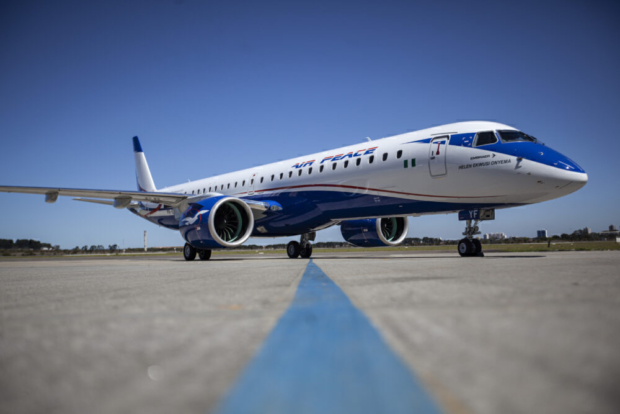
June
Sunclass Airlines Content & Wireless IFE
Inflight Dublin was awarded the contract for the provision of content and wireless IFE services by valued client, Sunclass Airlines.

Cabo Verde Wireless IFE
Cabo Verde Airlines chose Inflight Dublin to equip their B757 aircraft with the Everhub™ Wireless IFE solution.
July
Top 10 Aviation Solution Provider Award
Inflight Dublin was included in the 2021 Top 10 Aviation Solution Providers list by Aerospace Defense Review, which has an audience of 87,000+ digital subscribers including top tech decision-makers, engineers and corporate management within airlines.

September
Neos Content Services
Inflight Dublin was awarded the contract for the provision of IFE content services by Italian airline, Neos.
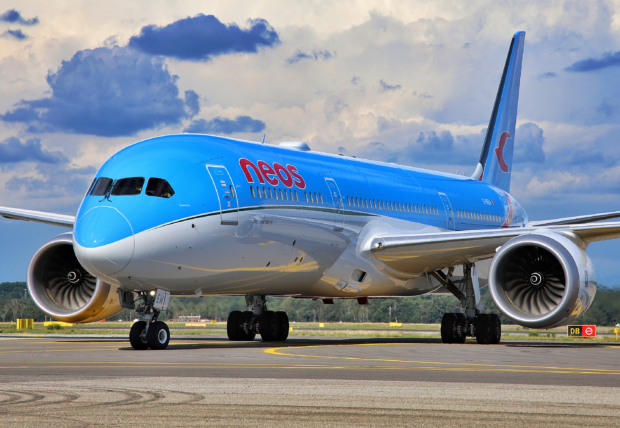
October
ASKY Content & Wireless IFE
ASKY, The Pan African airline, partnered with Inflight Dublin for the provision of content and wireless IFE services on its fleet of Boeing 737s New Generation aircraft.
Qatar iPad Solution
Inflight Dublin was chosen by Qatar Airways, Qatar Executive and Qatar Amiri to provide its Everhub™ iPad solution. The interactive media application is DRM-enabled and includes a fully customizable Graphical User Interface (GUI) that is aligned with Qatar Airways’ illustrious IFE brand – Oryx One.

UIA Wireless IFE
Inflight Dublin was selected by Ukraine International Airlines (UIA) to provide its end-to-end wireless IFE solution, Everhub™. The multi-year deal sees Inflight Dublin initially equipping 15 of UIA’s aircraft with its DO-160G certified Everhub™ portable wireless server.

December
APEX Expo 2021 – Long Beach
Inflight Dublin attended APEX Expo in Long Beach, the first in-person event for the industry in 2 years.
We’re looking forward to meeting everyone face-to-face again in 2022!
Contact Us
Inflight Dublin Favourites: Summer Movies

Jane Boland – Marketing Executive
The film that screams “summer” to me has to be Mamma Mia! The Movie.
Shot on the sunny Greek island of Skopelos, the backdrop of glistening ocean, steep cliffs and cobblestoned streets would convince anyone who’s watching to book a holiday to Greece ASAP.
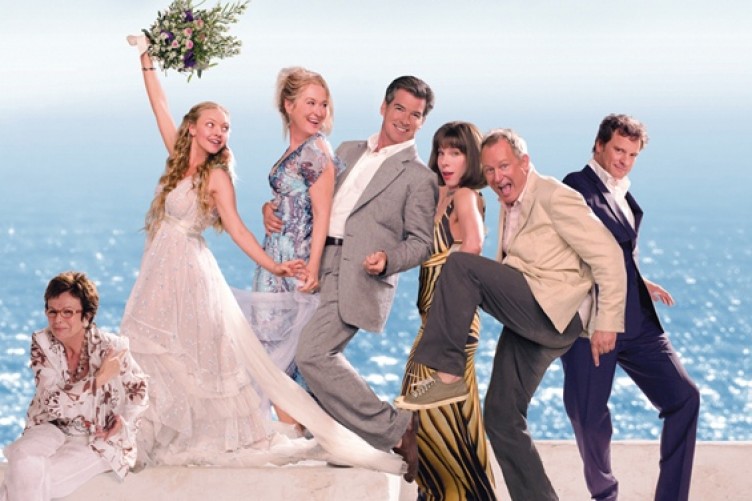
The film is an adaptation of the theatre show of the same name which is written by British playwright Catherine Johnson, and of course features all the greatest ABBA hits.
The incredible soundtrack paired with the stellar cast is a match made in heaven that makes you overlook Pierce Brosnan’s questionable singing.
Meryl Streep is radiant from start to finish and I love her relationship with Amanda Seyfried, which shows the deep bond between mother and daughter and the fear of letting each other go.
However, supporting actresses Christine Baranski and Julie Walters steal the show for me with their quick wit and brilliant banter throughout.
The ending is as satisfying as a movie like this should be, with every little issue or dilemma resolved and tied up in a pretty bow.
To sum it up: a bubbly romantic comedy that will have you dancing in your seat while also making you want to leave your life behind and run a hotel on a deserted Greek island.

Conor Regan – Snr. Content Acquisitions Executive
Summer movies are usually light on their feet, upbeat and a bit nostalgic.
Families go on poorly planned road trips, while teenagers have wistful romances. Beer, beaches and barbeques.
It’s cheery, easygoing, undramatic stuff.
Independence Day is not cheery, easygoing, undramatic stuff.
So how does it qualify for this post?
Well, can you think of a better way to spend an August evening than in the company of Will Smith and Jeff Goldblum, as they nuke the alien mothership?
I sure can’t.
Because Independence Day is the definition of “summer blockbuster”: big, bold, and a whole lot of fun.
Now, to be fair, the movie isn’t perfect. It has its share of implausible moments.
Like, how did Jeff transfer the virus to the mothership from his mid-90s Mac? Was there Wi-Fi onboard? Did he use Bluetooth? A USB?
And how did Will knock out that massive alien with just one suckerpunch? Maybe he had already started training for “Ali”. Who knows.
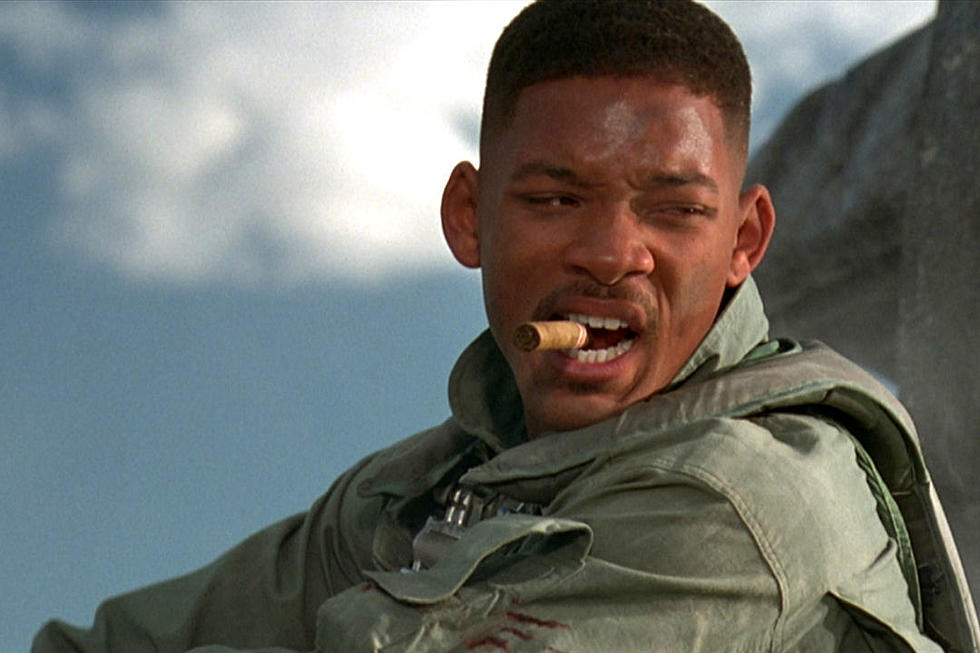
But there’s a lot to like here. So much in fact, that I’m happy to overlook the occasional, logic-defying plot hole. For instance:
- The cast is excellent, and has real chemistry (special mention to Judd Hirsch – I love his performance).
- The practical effects have held up very well.
- The action scenes, especially the dogfights, are tense and exciting.
- Bill Pullman’s iconic “today is our Independence Day” speech.
- The aliens are mysterious and scary.
- It’s surprisingly funny for a disaster film.
- The whole goddamn thing is just magnificently enjoyable.
So there you have it. Independence Day: perhaps an unlikely candidate for a favourite summer movie, but what can I say? It goes down easy.
Not unlike the alien ships, once their shields are down.

Rika Argadireja – Metadata Team Lead
My favourite summer movie would be the teen comedy What a Girl Wants.
Loosely based on The Reluctant Debutante, a 1955 play by William Douglas Home, it tells the story of Daphne Reynolds (Amanda Bynes), a 17-year-old New Yorker who embarks on a trip to England to find her long-lost father (Colin Firth).
In contrast to her free-spirited musician mother Libby (Kelly Preston), her father, Henry Dashwood, turns out to be a wealthy Lord and a prominent politician hoping to eventually become the prime minister.
He met her mother in Morocco, and they got married in a Bedouin wedding ceremony. When Henry brings her home to meet his family, Alistair, Henry’s aide, plots to drive them apart.

He tricks her to conceal her pregnancy from Henry and tells Henry that Libby is leaving because she was in love with someone else, leading Henry to be unaware of Daphne’s existence.
To make matters worse, Henry is currently engaged to Alistair’s daughter, the snobby Glynnis, who has an equally snobby teenage daughter, Clarissa.
They feel threatened by Daphne’s presence, since they think that a love child would negatively influence Henry’s political aspirations.
Undaunted, Daphne dives into a schedule of social events, determined to prove that love and proper etiquette can conquer all.
But as hard as she tries to reunite her parents and make a bid for “Debutante of the Year,” Daphne cannot conceal her irrepressible personality or hide what a girl wants.
Coming-of-age has always been my favourite genre, and in my opinion, this movie provides a good example of what growing up feels like – the struggles, emotions, and the desire to find ourselves.
Furthermore, the sentimental story is well-supported by the superb cast, Colin Firth’s charming acting and the lively chemistry between Firth and Bynes. Sweet and funny, this heart-warming movie never fails to put a smile on my face!
Inflight Dublin selected by Sunclass Airlines as its Content and Wireless IFE provider
Inflight Dublin has been awarded the contract for the provision of content and wireless Inflight Entertainment (IFE) services by Sunclass Airlines.

Commencing in August 2021, the agreement sees Inflight Dublin providing its wireless IFE solution, Everhub™, on board Sunclass Airlines’ A321 aircraft, while also providing content services across their A330 fleet. The content catalogue consists of Hollywood movies, TV Shows, Boxsets, Music, and Publications. Also included is Inflight Dublin’s revenue-generating gaming platform, Gladi8tor Gaming, through LXM.
Sunclass Airlines is a Danish charter airline that operates a fleet of 10 A330 and A321 aircraft to over 30 destinations across Scandinavia, Europe, South America, and Asia.
“Broadening our partnership with Inflight Dublin is a reflection of our commitment to further engage with our passengers and to create exciting new revenue streams. The quick turnaround time and the utilization of one supplier for both our content and wireless IFE requirements will ensure an efficient and flexible setup, rollout and future expansion of this innovative service. As we emerge from the Covid-19 crisis, we are delighted to have Inflight Dublin’s continued support and to avail of their Wireless IFE solution, Everhub™. It will be an exciting addition to our inflight service for our loyal passengers.” – Christina Pedersen, Sunclass Airlines’ Customer Experience Manager
– Christina Pedersen, Sunclass Airlines’ Customer Experience Manager
“Sunclass Airlines’ decision to continue our partnership for content services while also introducing Everhub™ on their narrow body aircraft gives us great pride and further validates that Everhub™ is the leading Wireless IFE solution in the market. With the endless possibilities our scalable solution offers, Sunclass Airlines and Inflight Dublin will be building on the initial rollout with a range of engaging features to delight passengers and generate additional revenues in the near future.” – Barry Flynn, Inflight Dublin’s CCO
For more information about Everhub™, click here.
Inflight Dublin to provide Wireless IFE trial for Air Peace
Inflight Dublin has been chosen by Nigeria’s foremost airline, Air Peace, to provide a trial of its Wireless IFE solution, Everhub™.
Beginning in May, Inflight Dublin will equip Air Peace’s brand new Embraer 195-E2 aircraft with the DO-160G certified Everhub™ Portable wireless server. The browser-based software platform features secure DRM streaming and a fully-customizable Graphical User Interface (GUI) to align with Air Peace’s brand guidelines. The content package consists of Hollywood blockbusters and TV shows, International content, documentaries, publications, and games from Inflight Dublin’s innovative gaming platform, Gladi8tor Gaming.

Photo: Embraer
“We have benefitted from Inflight Dublin’s expertise in the inflight entertainment industry for many years, allowing us to provide the best on-trend and engaging content to our passengers during their flight. Introducing wireless IFE onboard was something we had been eagerly investigating and Inflight Dublin’s wireless solution ticked all the boxes. We are delighted our passengers will be able to experience great inflight entertainment on their journey with Air Peace, whether it is on a seatback screen or their own personal devices” – Akram Beldi, Air Peace’s In-Flight Entertainment Engineer.
Air Peace is a passenger and charter airline with a varied fleet of 28 aircraft (B777, B737, ERJ-145 and E195-E2) and currently services 16 local routes, 5 regional and 2 international destinations including Johannesburg and Dubai via Sharjah. The airline is reputed for its best-in-class flight services and strong commitment to passenger safety.
- Barry Flynn, Inflight Dublin’s CCO.
Inflight Dublin’s Upgraded Wireless IFE Passenger Web App
Inflight Dublin has launched an upgraded passenger web application for its wireless inflight entertainment (IFE) system, Everhub™. The new features of the web app were established from continuous client feedback and evolving industry trends. This culminated in a focus to minimise physical touchpoints and increase Ancillary Revenue opportunities. The upgraded web app is also available as part of Inflight Dublin’s recently announced 6-month free trial of the Everhub™ wireless IFE solution.

The improved web app showcases a sleek new design with switchable light and dark themes. Using a new Material User Interface (Material UI) and Progressive Web App (PWA) features allows the web-based interface to appear as a native application without the need for any app/SDK installations on the end-users device. With Ancillary Revenue at the forefront of airlines’ minds, advertising plays a key role in the upgraded web app. Everhub™ supports banner ads, pre-roll video ads, and interstitial ads which can appear on a timed basis or popup when navigating through the system. With the growing need for contactless and paper-free initiatives, Health and Safety information and on-board protocols can be fully digitized, reducing risks by eliminating unnecessary touchpoints on board.
The web app is integrated with Everhub’s cloud-hosted Control Centre which provides back-office capabilities at no additional cost to the airline. This enables the deployed servers to be configured, operationally tracked, and updated remotely. The branded User Interface (UI) is fully customizable and remotely accessible, allowing airlines to enable or disable features including the types of entertainment, advertising, and shopping catalogues that are available to passengers. In addition, the airline can provide custom content such as marketing campaigns, airline news & service bulletins, and destination information, all from the comfort of their own office. The upgraded web app also includes Inflight Dublin’s data analytics platform, IFD Insights. This offers airlines access to content usage trends, advertising reports, and survey feedback, providing constant updates on the performance of their IFE offering on board.
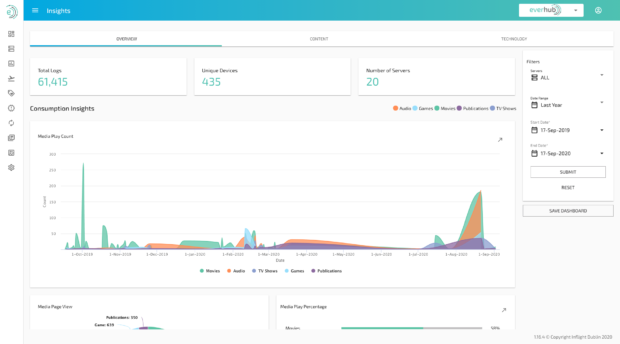
Why It’s Great: The Darjeeling Limited
Wes Anderson has made so many great movies, it’s inevitable that one of them would be a bit overlooked.
The Darjeeling Limited is that movie. And it’s a shame! Because it’s wonderful, and right up there with The Grand Budapest Hotel and The Royal Tenenbaums.
So. With The French Dispatch hitting inflight screens soon (can’t wait), it’s a good time to dust off this sort-of-forgotten-about gem.
Here are six reasons why The Darjeeling Limited is great.
The Cast
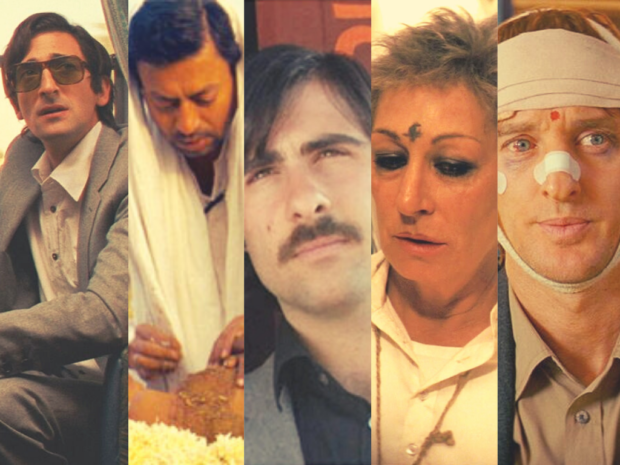
The Darjeeling Limited is about three brothers who, following their father’s death, take a train journey across India that (they hope) will provide healing, self-discovery and enlightenment.
The controlling elder brother, Francis, could be grating if played by the wrong actor: but Owen Wilson injects such sweetness and pathos into the role, that it’s hard not to like him.
Adrien Brody, meanwhile, brings a sensitivity to the icy and cynical Peter, while Jason Schartzmann plays Jack with a perfect combination of charm and world-weariness.
Anjelica Huston is as good as you’d expect as the brothers’ estranged mother, and celebrated (and sadly, recently deceased) Indian actor, Irrfan Khan, gives a standout performance as a bereaved father.
And yes, Bill Murray makes an appearance too.
As far as casting goes, it’s hard to fault the movie.
It’s a Real Tearjerker
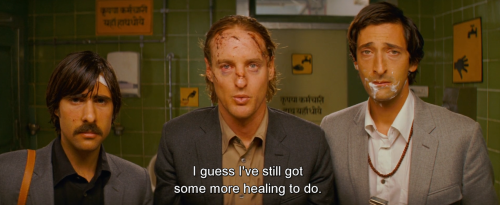
The Darjeeling Limited is one of Anderson’s most human and affecting films.
There are a number of moving moments, like the brothers’ reunion with their mother, or the death of the village boy. But the final scene is the best example (be warned – spoilers dead ahead!):
At this point, the brothers have accepted the loss of their father, and are ready to let him go. This is symbolised by how they leave their luggage behind as they jump on the departing train.
A simple metaphor, yes, but a powerful one too, and it makes for a wonderfully bittersweet conclusion.
Personally speaking, The Grand Budapest Hotel might be his most emotionally resonant movie, overall – that was something else. But Darjeeling is a close second.
India and its People
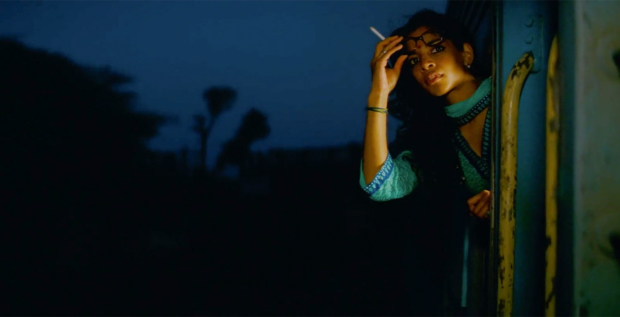
This was Wes Anderson speaking in a 2007 interview, and his affection for the country translates to the big screen.
Whether it’s a taxi ride through the crowded streets of Jodhpur, or a wide-angled shot atop the Udaipur mountains, or in the ornately decorated train, Anderson’s India is vibrant and stunning to look at.
But it’s not just the location. It’s the people, too.
From the large cast of local extras, to more prominent roles like Rita, The Chief Steward and The Father, almost every scene is teeming with interesting, and brilliantly performed, native characters.
Both of these elements, combined, create an India that’s authentic, complex and alive.
Visual Style

Extended tracking shots; symmetrical framing; meticulous set design; slo-mo; lavish costumes and whip pans. Just some of the stylistic signatures that have made Anderson one of Hollywood’s most distinctive directors.
All are present and correct in the movie, and they create an aesthetic that is both instantly recognisable and lovely to look at. Check out the below scene for some classic Anderson-isms:
We expect a high standard of visual loveliness from the director, and he doesn’t let us down in Darjeeling.
Brotherly Love
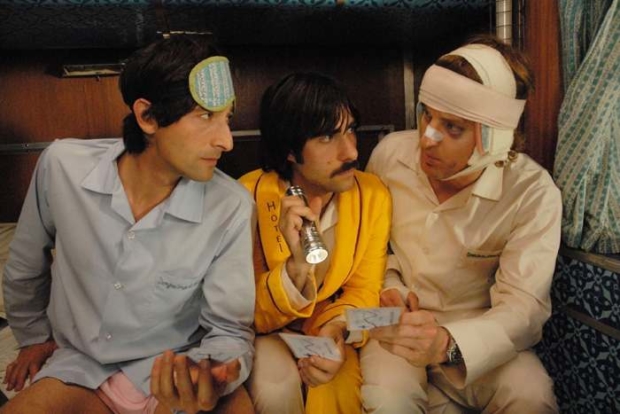
In this 2018 article, Marshall Shaffer writes how he “can’t think of a film that pinpoints the way brothers operated in a space together quite as accurately as The Darjeeling Limited“.
He’s absolutely right.
Brody, Wilson and Schartzmann mightn’t look like brothers, but they act like it. Take any given scene, and it’s all there: the bickering; the subtle jabs; the layered communication and the thrown fists.
But more importantly, and we see it more as the film progresses, is the love and affection that they have for one another.
Anderson has a gift for portraying dysfunctional and fractured families onscreen – The Royal Tenenbaums and Moonrise Kingdom are two fine examples.
But The Darjeeling Limited is where he did it best.
Humour
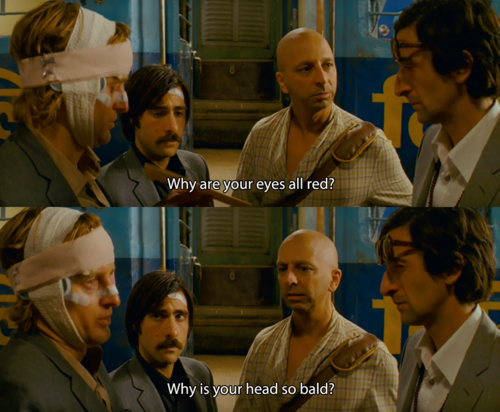
Comedy has always been an essential ingredient in Anderson’s movies, providing relief from their oftentimes sad and nostalgic themes. The Darjeeling Limited is no exception.
There are more than a few big laughs, but this is the biggest:
It’s a hilarious scene. The build-up to Francis and Peter wrestling on the ground is brilliantly done, and Jack’s line two minutes in (“I love you too, but I’m gonna mace you in the face!”) is one of my favourites.
Or how about this exchange between Peter and Jack. It’s the director at his deadpan best:
Jack: What did he say?
Peter: He said the train is lost.
Jack: How can a train be lost? It’s on rails.
Classic. How can you not love this film?
Written by Conor Regan.
At Inflight Dublin, we pride ourselves on providing the highest quality film, TV and audio content to our clients. If you’d like to learn how we can do the same for your airline, make sure to get in touch mail@inflightdublin.com
Further Reading
- “The Unpopular Opinion: The Darjeeling Limited is Wes Anderson’s Best Film” by Marshall Shaffer. Slashfilm.com.
- “Why The Darjeeling Limited is Wes Anderson’s Best Film” by Nathaniel Smith. Littlewhitelies.com.
- “The Darjeeling Limited – Film Review” by Philip French. Guardian.com.
Image Credits
- All images courtesy of 20th Century Fox. All rights reserved.
Inflight Dublin signs deal with YouTube sensation Dude Perfect
Inflight Dublin has announced an exclusive inflight content deal with Dude Perfect, American sport and comedy YouTube sensation.
The deal sees Inflight Dublin obtaining the distribution rights of Dude Perfect content on airlines for inflight entertainment, with their YouTube channel boasting an impressive 51 million followers and over 10 billion views. The exciting content targets sport and trick-shot lovers around the world, with their extensive catalogue of stunt videos and humorous skits, and new videos uploaded weekly to the platform.

“We are very excited about working with Inflight Dublin to bring our creative entertainment to the airline industry.”
Coby Cotton, Dude Perfect Co-Founder
The Texas-based group is known for collaborations with top global brands such as Oreo, Pringles and Gillette. The partnership with Inflight Dublin will bring Dude Perfect’s thrilling video content on-board the biggest airlines, a unique addition to traditional IFE content to enhance the passenger experience. Inflight Dublin specializes in creating bespoke content packages for airlines, providing innovative, on-trend content such as Viral, YouTube and Wellness videos.
Becoming The Boss: Bruce Springsteen’s “Born to Run”
Pre-Born to Run: 1973-1974
Given his popularity for the last four-plus decades, it’s strange to think of a time when Bruce Springsteen wasn’t The Boss.
But rewind back to 1974, and this was just the case.
He had just released two albums (Greetings from Asbury Park, N.J. and The Wild, the Innocent & the E Street Shuffle) that had underperformed commercially, and his label, Columbia Records, were losing confidence.
The third one would be make-or-break: he needed to deliver, and in a big way.
But, before he could get to work, there was a hurdle to get over first.
As a way of testing the waters, Columbia decided that they’d only fund a single, not an album. Get on the radio, and they’d put up for the new record. If not, Bruce was on the first Greyhound bus back to New Jersey.
Good thing, so, that the song he came up with was “Born to Run”.
The career-saving anthem didn’t come quickly – recording sessions dragged on for six months – but when the dust settled, Springsteen would have his first big hit, and, crucially, a label that was now on-board.
Next up was the album of the same name.
Line-up Changes and Recording Problems
Things got off to a rocky start when keyboardist David Sancious, and drummer Ernest “Boom” Carter, decided to leave the E-Street Band.
Both excellent musicians whose playing was central to “Born to Run”‘s frenzied sound, it was an unwelcome and untimely blow.
The search for replacements wasn’t without its difficulties, as Springsteen memorably described in his 2016 memoir:
Eventually, Max Weinberg and Roy Bittan, two veterans of the Broadway circuit, joined on drums and keyboard.
As replacements go, he couldn’t have chosen better. They’d bring a solidity and finesse to the music, and become longstanding members (both are still in the band to this day).
Bruce and the E-Street gang then decamped to The Record Plant to get to work.
The sessions were, understandably given the circumstances, long, stressful and intense.
Springsteen, despite labouring over every individual note and tempo change, was chronically dissatisfied and, as time went on, some started to question if the album would ever get completed.
But fast-approaching tour dates would force his hand. Scheduled to coincide with the album’s release, they provided a much-needed deadline: now, for better or worse, he needed to finish the job.
So, a few frantic studio sessions later, he decided to cut (what he thought were) his losses; Born to Run was released, at last, on August 25th, 1975.
The Album Drops
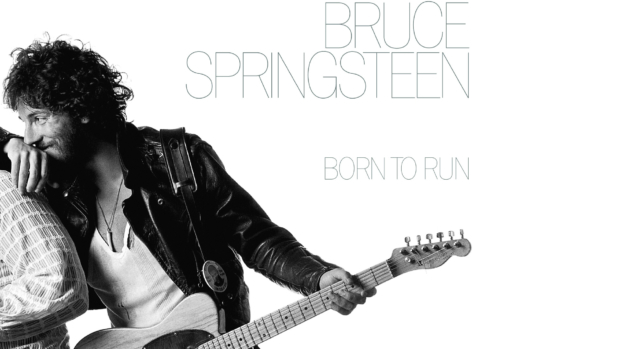
He needn’t have been so worried.
Born to Run quickly became a monster hit and would, in time, become recognised as one of the best rock albums of all time.
“Thunder Road” kicks it all off. Following a gentle intro of piano and harmonica, Bruce enters with one of his most iconic verses:
Screen door slams
Mary’s dress waves
Like a vision she dances across the porch
As the radio plays
The song gradually builds in intensity, until a Clarence Clemons’ sax solo, played over a deep half-time feel, brings things to a very theatrical, and very powerful, crescendo.
Is there a better opener to an album than “Thunder Road”? A thrilling introduction to the world of Born to Run and the characters that inhabit it, it’s just perfect.
“Tenth Avenue Freeze-Out” follows, and gives us a moment to catch our breath.
Held together by Weinberg’s rock solid backbeat, and elevated by Steve van Zandt’s horn arrangement, it’s a fun, laidback, loose number that draws on Springsteen’s love of Motown.
Quick aside – its 1975 performance at the Hammersmith Odeon is an absolute must-see:
“Night” is overlooked. A blur-collar anthem about frustration and escape, it’s energetic and catchy, and leads us nicely into the fantastic “Backstreets“.
The first of the album’s two epics, this is the discerning fan’s favourite. And with good reason: there’s a lot to love here, especially the raw and intense vocal. The impressionistic lyrics are excellent, too:
Catching rides to the outskirts
Tying faith between our teeth
Sleeping in that old abandoned beach house
Getting wasted in the heat
And then comes the one everyone knows, the one that made it all happen – the title track. It’s so familiar, but still so good: the opening drum fill; the tremolo guitar line; Garry Tallent’s driving and melodic bass; and of course, that hook:
‘Cause tramps like us
Baby, we were born to run
It’s his signature song for a reason.
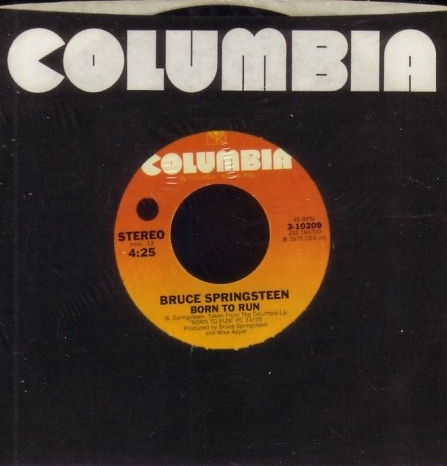
Influenced by Springsteen’s love of ’50’s rhythm and blues, “She’s the One“, is catchy and fun. Because of the ridiculous quality of the rest of the album, it’s the least essential track here – but that’s not to say it’s not great (which it is).
Tom Waits once said that he wished he wrote “Meeting Across the River“. It’s easy to understand why.
Over a sparse arrangement of piano, horn and upright bass, Springsteen spins an evocative yarn about two down-on-their-luck characters looking to score a deal. A haunting deep cut that, being more jazz than rock, highlights Springsteen’s (sometimes underappreciated) ability to bounce seamlessly between genres.
And last but certainly not least, we have “Jungleland“: the best track on the album, and many would say of the songwriter’s career (I’d say “Racing in the Street” personally, but it’s a close thing).
Opening with Suki Laha’s cinematic violin line, this nine-plus minute saga weaves through several movements before climaxing with a beautiful Clemons’ solo – his “greatest recorded moment”, according to Bruce himself.
Then, the song drawing to a close, Springsteen just howls; a stunning moment on an album that’s full of them.
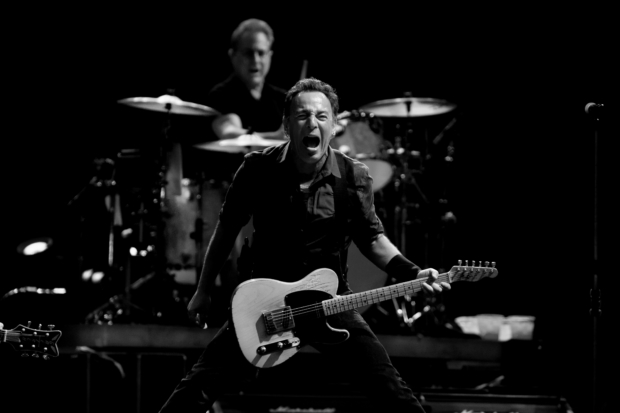
Becoming The Boss
Critically, the album was extremely well-received.
In Rolling Stone, Greil Marcus called it a “masterpiece” that “pays off on every bet ever placed on him”, and it was also voted third best album in the prestigious Village Voice annual poll.
It exceeded commercial expectations too. Peaking at number three in the Billboard charts, it would go triple platinum in 1986, and remains a reliable catalogue seller for Columbia to this day.
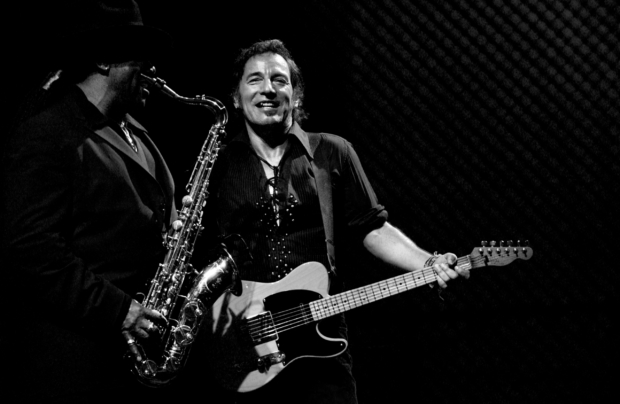
From here on out, the venues would only get bigger, and, by the end of 1975, Springsteen had made history by being on the cover of Time and Newsweek in the same week.
The struggling songwriter who couldn’t get on the radio, and was this close to being dropped, was no more.
In his place, stood the biggest, and most acclaimed, rock ‘n’ roller in the world.
Bruce Springsteen had become The Boss.
Written by Conor Regan.
At Inflight Dublin, we pride ourselves on providing the highest quality film, TV and audio content to our clients. If you’d like to learn how we can do the same for your airline, make sure to get in touch – you contact us here.
Image Credits (in descending order)
- Banner photo by Fabio Diena @ Shutterstock.com.
- The E-Street Band. Photo by Fabio Diena @ Shutterstock.com.
- Born to Run album cover. Photo by Eric Meola @ Colombia Records.
- Bruce Springsteen. Photo by Fabio Diena @ Shutterstock.com.
- Bruce Springsteen and Clarence Clemons. Photo by Fabio Diena @ Shutterstock.com.
International Film Round-Up
When Bong Joon-ho won the Golden Globe for Best Foreign Language Film, he opened his speech with this gem:
Once you overcome the one-inch tall barrier of subtitles, you will be introduced to so many more amazing films.
Wise words indeed.
Many of cinemas’ finest moments aren’t in English, so it’s fantastic to see the International market’s growth of the last few years.
So, in this spirit; here are five titles that I recommend you check out.
All are outstanding, and represent the best of International film.
Enjoy. 🙂
Pain & Glory (Spain)
Pedro Almodóvar’s 21st feature and his first since 2016’s excellent Julieta, Pain and Glory finds the celebrated Spanish director in a contemplative and reflective mood.
Starring long-time collaborative partner Antonio Banderas, the film focuses on ageing director Salvador Mallo as he navigates creative, physical, and existential crises.
Banderas is in top form in what many are calling a career-best performance. Very much worthy of his Best Actor win at Cannes and Oscar nomination for the same, those only familiar with his roles as brawny action heroes (and a certain sword-wielding CGI cat) are in for a welcome surprise.
The supporting cast, comprised of Penelope Cruz, Julieta Serrano, and Leonardo Sbaraglia, is just as impressive, and Alberto Iglesias’ unsettling and melancholic score complements it all perfectly.
A poignant look at growing older and how we come to terms with ourselves, Pain and Glory is a career-best work from the much-celebrated director.
Portrait of a Lady on Fire (France)
Portrait of a Lady on Fire has received a lot of praise for its visual style, and, with its sumptuous cinematography and stark set design, it’s easy to see why.
But it’s not just lovely to look at. A bittersweet romance about two star-crossed lovers, this period piece stays with you long after the credits have rolled.
Taking place in 18th century France, the film tells the story of Marianne, a young painter hired to paint Eloise’s portrait for her upcoming wedding.
However, because she’s a reluctant bride, Eloise is unwilling to commit herself to canvas, so Marianne is forced to paint her in secret. Soon enough, the artist falls for her subject.
As aesthetically pleasing as it is emotionally devastating, Portrait of a Lady on Fire is as David Ehrlich writes in his Indiewire review, “as perfect a film as any to have premiered this year.”
Parasite (South Korea)
Words like “masterpiece” get thrown around a lot, but it seems like the right one to use when describing Parasite.
Funny, unpredictable, thrilling, and moving while also providing a razor-sharp social commentary, this particular film merits the lavish praise that’s come it is way.
Recipient of the Palme D’Or (and an eight-minute standing ovation) at Cannes, it is also, as I’m sure you know, the first non-English film to win the Best Picture Oscar.
Hopefully the first of many.
It’s also had great success at the box office. Bringing in a worldwide total of $266.9 million it has, with ten million-plus admissions, also been seen by more than a fifth of its native South Korea’s population.
About two families at opposite ends of the class spectrum, the film centres around the impoverished Kims and the affluent Parks, and the twisted relationship that develops between them.
I’m going to leave it there though, because the less you know before diving in, the better. I strongly suggest you just do the sensible thing and watch it.
When Hitler Stole Pink Rabbit (Germany)
When I think of war films on the big screen, adult-only ones like Full Metal Jacket, Saving Private Ryan, Dunkirk, and 1917 come to mind.
However, there are others, like Grave of the Fireflies and The Boy in the Striped Pyjamas, that portray the problematic subject in a way that’s suitable for younger viewers.
When Hitler Stole Pink Rabbit, a German film based on the 1974 book of the same name, does this too – and quite brilliantly.
Told through the perspective of 9-year old Jewish girl Anna (a pitch-perfect performance from Riva Krymalowski), it tells the story of her and her family’s escape from Berlin, and subsequent experience as refugees.
This is an excellent adaptation. Tactful in its portrayal while never talking down to its younger audience, it’s a moving watch, and a powerful reminder of the devastating consequences of war.
Shoplifters (Japan)
Hirokazu Koreeda’s Shoplifters was one of the most highly acclaimed films of 2018, garnering critical praise and winning that year’s Palme d’Or.
The film is about a group of outsiders who engage in petty theft to make ends meet.
After one particular shoplifting run, two members of the gang, Osamu and his son Shota, come across a homeless girl in the cold who they decide to take in. They’re all quite content together – that is, until, an unforeseen incident tests the bonds that unite them.
Shoplifters is a touching and thought-provoking film.
It reminded me of the great Ken Loach in how it empathises with those who’ve fallen into poverty, and in the naturalistic, documentary-like way it depicts these lives onscreen.
Critic Robbie Collin nailed it when he calls it, in this review for the Telegraph, “compassionate, socially conscious filmmaking… that steals and snatches your heart”.
It sure does.
Written by Conor Regan, Senior Content Acquisition Executive.
At Inflight Dublin, we pride ourselves on providing the highest quality film, TV, and audio content to our clients. If you’d like to learn how we can do the same for your airline, please do get in touch by sending a message to mail@inflightdublin.com
The Music Biopic in 2020
Record-breaking returns, critical acclaim, packed screenings and loads of awards.
Yep, it’s fair to say that the music biopic has performed pretty impressively recently.
However, it wasn’t always the case.
Because, besides an occasional hit, the genre has historically brought in low to middling box office numbers; certainly nothing compared to traditional blockbuster bankers like action, comedy and drama.
So, what’s changed? What are the reasons for this shift to the mainstream, and why now?
Let’s take a look at a few reasons why.
Bohemian Rhapsody’s Breakthrough
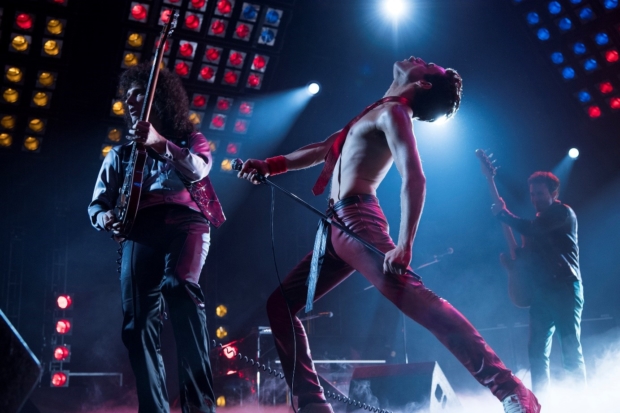
Sometimes a one-off success is needed to bring a style in from the margins, and this is precisely what Bohemian Rhapsody did for the music biopic.
Chronicling Queen’s career from their formation up to that Live Aid performance, it was the ideal introduction for those who knew little about the subgenre.
The numbers were remarkable. The 6th highest-grossing movie of 2018, its $900 million-plus return is especially noteworthy when you consider that Straight Outta Compton was, until then, the top-performing music movie with $201 million (almost $700 mill less!).
But the good news wasn’t just financial. The film won four Oscars as well as Best Motion Picture (Drama) at the Golden Globes, and, with a very respectable IMDb rating of 8.0, is well-liked from an audience perspective.
Such a total, on-all-fronts success was completely unexpected (it even took Brian May by surprise), and proved that the humble music biopic could compete at the box office, and beyond.
Music Streaming

It’s no coincidence that, as streaming has become the dominant model of music distribution and consumption, more music biopics have hit screens than ever before – but how are the two connected?
Well, on the one hand, now that listeners have vast libraries of music at their fingertips, musicians are, generally speaking, being heard by audiences that are more evenly spread across nationalities and generations.
An offshoot from this wider listenership is a heightened interest in the lives of the artists themselves, and the eras from which they came – elements that the music biopic is uniquely well-suited in depicting.
It’s inevitable, so, with the rise of music streaming, so too would there be an increased demand for them.
A downside of streaming though, from the perspectives of the artist and their labels at least, has been the decreased revenue from traditional models (album sales, for instance) – a factor that, as we’ll see in the next point, has also had an impact on the subgenre’s popularity.
Changing Attitudes to Rights

A sticking-point for biopic creators in the past has been the acquisition of an artist’s music and life rights.
The much-delayed Janis Joplin movie is the classic example, so infamous that it was the subject of a particularly excellent 30 Rock parody:
However, things are changing. With the losses felt by the industry due to streaming, artists and labels are becoming increasingly flexible and open, something which Dan Simpson sums up in this article:
But, as Simpson also points to in the same piece, the potential benefits of the biopic aren’t just financial:
Taking these shifts in music and media into account, it’s no wonder that we’re seeing the industry become more flexible when it comes to rights – which means, ultimately, more music movies.
We’ll get that Janis Joplin one yet.
Heightened Audience Appeal

Stories about the rise-and-fall (and rise again) of a character never seem to go out of fashion.
Whether it’s Rocky, It’s a Wonderful Life or The Shawshank Redemption, these type of movies have a universal quality that resonates with us all.
With the up-and-down nature of a life in the spotlight, famous musicians are a natural fit for this type of narrative arc, and Hollywood has recognised this – hence several recent biopics have been based around cosily familiar three-act structures that often conclude with the protagonist’s rebirth.
By shaping the movies like this, filmmakers have been able to tap into an established audience, and this has, in turn, helped push the subgenre to prominence.
Another recent trend has been to soften the biopics’ subjects, and present PG-13 versions of what are often R-rated lives – one example being Queen, whose rock ‘n’ roll lifestyle was toned down for any impressionable kids watching.
Since adult-only music films have historically had a rough time at the box office, the milder ratings of recent ones mean that they can reach a broader, and younger, audience.
In Conclusion!

The music biopic has been one of the major breakout genres of the last few years, and a combination of four factors go some way to explaining why: the enormous success of Bohemian Rhapsody; significant changes in music distribution; shifting attitudes to rights and licensing; and the creation of a more accessible batch of biopics.
Whether it has the staying power of other recent industry trends (superhero movies and remakes, for example) is anyone’s guess. Still, you can be sure that the music movie will be hitting inflight screens for another while at least.
Very welcome news, I’m sure you’ll agree, for music obsessives everywhere. 😉
Written by Conor Regan.
Inflight Dublin prides itself on providing the most current and on-trend film, TV, and audio content to our clients – and this includes music biopics! If you’d like to learn more about our company, and perhaps how we can do the same for your organisation, contact us at mail@inflightdublin.com
Further Reading
-
2020 movies: The best upcoming musical biopics this year, from Elvis to Bowie by Sian Hamer and Tom Eames.
-
Hollywood is hoping music biopics are their new golden ticket by Gregory Wakeman.
-
Rocketmen and stardust: why music biopics dominate the film industry by Dave Simpson.
-
The Year of the Musical Biopic by Katherine Schwartz.
-
Best Music Biopics: 30 Essential Films For Music Fans by Tim Peacock.
Image Credits (in descending order)
-
Bohemian Rhapsody. Photo: 20th Century Fox.
-
Music Streaming. Photo: Unknown @ Canva.com.
-
Cinema Audience. Photo: mail272 @ Canva.com.
-
Lightbulb: Photo : TeroVesalainen @ Pixabay.


